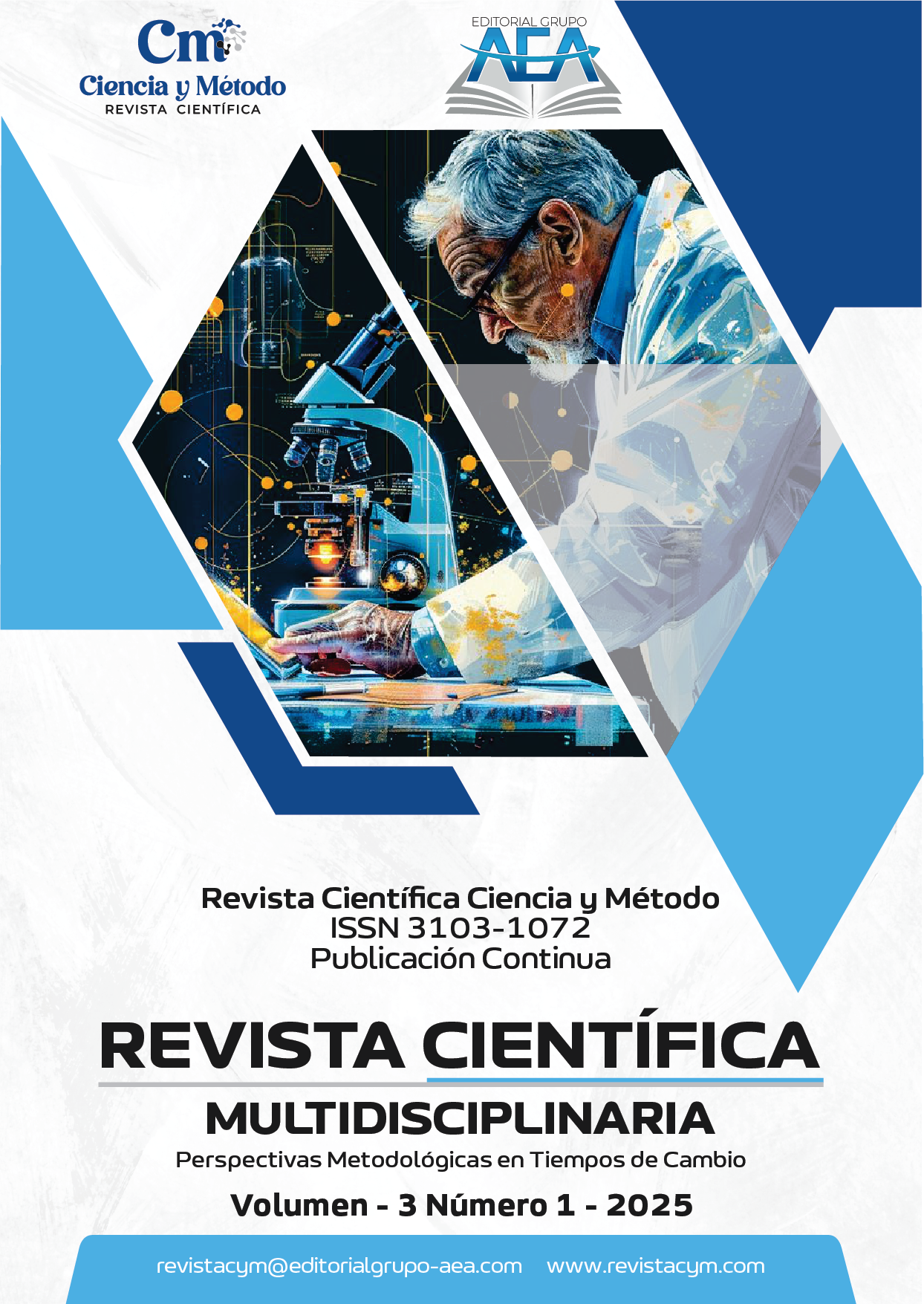Neuromanagement and its influence on organizational productivity
Main Article Content
Abstract
The study critically analyzes neuromanagement as an interdisciplinary approach that integrates neuroscience and organizational management to optimize productivity. Through a systematic literature review of research published between 2010 and 2025 in Scopus and Web of Science, the neurocognitive mechanisms that underpin decision making, motivation and transformational leadership were identified. The findings show that circuits such as the prefrontal cortex and amygdala influence managerial judgment, while activation of the dopaminergic system supports intrinsic motivation. In addition, neurofeedback was shown to improve emotional self-regulation and performance. The paper concludes that, despite its potential, neuromanagement faces methodological and ethical challenges related to privacy and lack of longitudinal studies. A responsible use based on rigorous evidence is recommended to maximize benefits and prevent risks in organizations.
Downloads
Article Details
Section

This work is licensed under a Creative Commons Attribution-NonCommercial 4.0 International License.
How to Cite
References
Bechara, A., Damasio, H., & Damasio, A. R. (2000). Emotion, decision making and the orbitofrontal cortex. Cerebral Cortex, 10(3), 295–307. https://doi.org/10.1093/cercor/10.3.295 DOI: https://doi.org/10.1093/cercor/10.3.295
Becker, W. J., Cropanzano, R., & Sanfey, A. G. (2011). Organizational neuroscience: Taking organizational theory inside the neural black box. Journal of Management, 37(4), 933–961. https://doi.org/10.1177/0149206311398955 DOI: https://doi.org/10.1177/0149206311398955
Berka, C., Levendowski, D. J., Lumicao, M. N., Yau, A., Davis, G., Zivkovic, V., ... & Craven, P. L. (2007). EEG correlates of task engagement and mental workload in vigilance, learning, and memory tasks. Aviation, Space, and Environmental Medicine, 78(5 Suppl), B231–B244.
Boyatzis, R. E., Rochford, K., & Taylor, S. N. (2015). The role of the positive emotional attractor in vision and shared vision: Toward effective leadership, relationships, and engagement. Frontiers in Psychology, 6, 670. https://doi.org/10.3389/fpsyg.2015.00670 DOI: https://doi.org/10.3389/fpsyg.2015.00670
Casanova-Villalba, C. I. (2022). Desafíos en el crecimiento empresarial en Santo Domingo: Un análisis de los factores clave en el periodo 2021-2022. Journal of Economic and Social Science Research, 2(3), 1–12. https://doi.org/10.55813/gaea/jessr/v2/n3/53 DOI: https://doi.org/10.55813/gaea/jessr/v2/n3/53
Casanova-Villalba, C. I., Herrera-Sánchez, M. J., & Casanova-Villalba, L. A. (2024). Spin-offs y su impacto económico en el desarrollo de un ecosistema innovador y sostenible en Ecuador. En Gestión inteligente: Sinergias en la administración. (pp. 175–192). Editorial Grupo AEA. https://doi.org/10.55813/egaea.cl.82 DOI: https://doi.org/10.55813/egaea.cl.82
Enriquez-Geppert, S., Huster, R. J., & Herrmann, C. S. (2017). EEG-Neurofeedback as a tool to modulate cognition and behavior: A review tutorial. Frontiers in Human Neuroscience, 11, 51. https://doi.org/10.3389/fnhum.2017.00051 DOI: https://doi.org/10.3389/fnhum.2017.00051
Es Beaty, R. E., Benedek, M., Silvia, P. J., & Schacter, D. L. (2016). Creative cognition and brain network dynamics. Trends in Cognitive Sciences, 20(2), 87–95. https://doi.org/10.1016/j.tics.2015.10.004 DOI: https://doi.org/10.1016/j.tics.2015.10.004
Gruzelier, J. H. (2014). EEG-neurofeedback for optimising performance. I: A review of cognitive and affective outcome in healthy participants. Neuroscience & Biobehavioral Reviews, 44, 124–141. https://doi.org/10.1016/j.neubiorev.2013.09.015 DOI: https://doi.org/10.1016/j.neubiorev.2013.09.015
Hammond, D. C. (2016). What is neurofeedback: An update. Journal of Neurotherapy, 15(4), 305–336. https://doi.org/10.1080/10874208.2011.623090 DOI: https://doi.org/10.1080/10874208.2011.623090
Herrera-Sánchez, M. J. (2021). Estrategias de Gestión Administrativa para el Desarrollo Sostenible de Emprendimientos en La Concordia. Journal of Economic and Social Science Research, 1(4), 56–69. https://doi.org/10.55813/gaea/jessr/v1/n4/42 DOI: https://doi.org/10.55813/gaea/jessr/v1/n4/42
Lee, N., Senior, C., & Butler, M. J. R. (2012). The domain of organizational cognitive neuroscience: Theoretical and empirical challenges. Journal of Management, 38(4), 921–931. https://doi.org/10.1177/0149206312439471 DOI: https://doi.org/10.1177/0149206312439471
Passmore, J., & Marianetti, O. (2015). Neuroscience in coaching: Working with the brain in mind. Coaching: An International Journal of Theory, Research and Practice, 8(1), 73–85.
Sanfey, A. G., Loewenstein, G., McClure, S. M., & Cohen, J. D. (2006). Neuroeconomics: Cross-currents in research on decision-making. Trends in Cognitive Sciences, 10(3), 108–116. https://doi.org/10.1016/j.tics.2006.01.009 DOI: https://doi.org/10.1016/j.tics.2006.01.009
Santander-Salmon, E. S. (2023). Gestión del Talento Humano en Empresas Ecuatorianas: Perspectivas y Desafíos. Revista Científica Zambos, 2(1), 56-73. https://doi.org/10.69484/rcz/v2/n1/38 DOI: https://doi.org/10.69484/rcz/v2/n1/38
Schultz, W. (2016). Dopamine reward prediction error coding. Dialogues in Clinical Neuroscience, 18(1), 23–32. https://doi.org/10.31887/DCNS.2016.18.1/wschultz DOI: https://doi.org/10.31887/DCNS.2016.18.1/wschultz
Senior, C., Lee, N., & Butler, M. J. R. (2011). Organizational cognitive neuroscience. Organization Science, 22(3), 804–815. https://doi.org/10.1287/orsc.1100.0532 DOI: https://doi.org/10.1287/orsc.1100.0532
Seo, M.-G., Barrett, L. F., & Bartunek, J. M. (2004). The Role of Affective Experience in Work Motivation. The Academy of Management Review, 29(3), 423–439. https://doi.org/10.2307/20159052 DOI: https://doi.org/10.2307/20159052
Waldman, D. A., Wang, D., Hannah, S. T., & Balthazard, P. A. (2017). A neurological and psychological model of leadership effectiveness. Academy of Management Perspectives, 31(4), 307–327.
Zak, P. J. (2017). The neuroscience of trust. Harvard Business Review, 95(1), 84–90.





